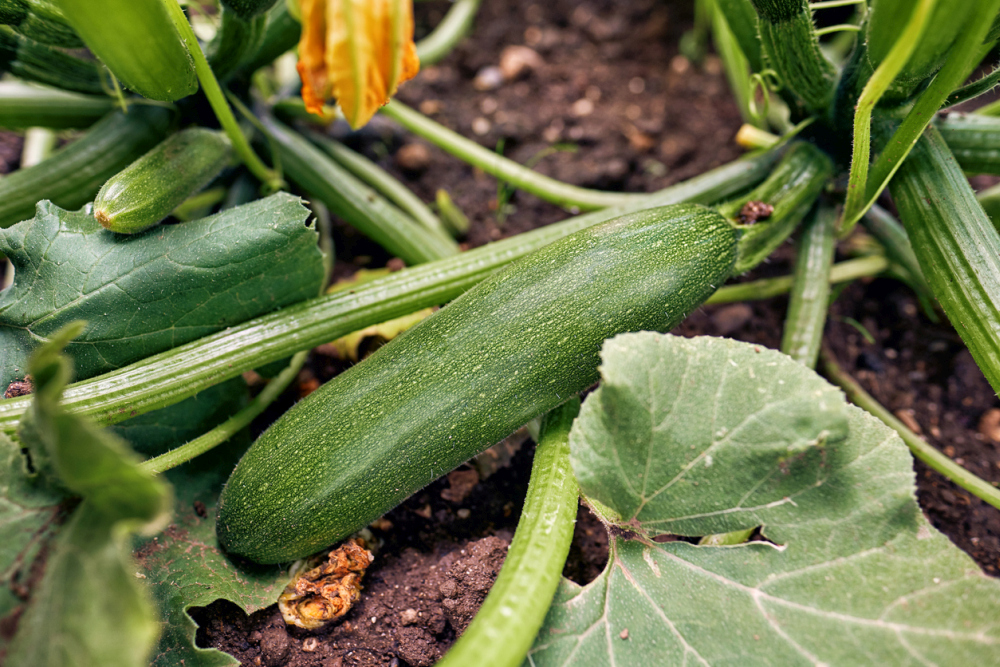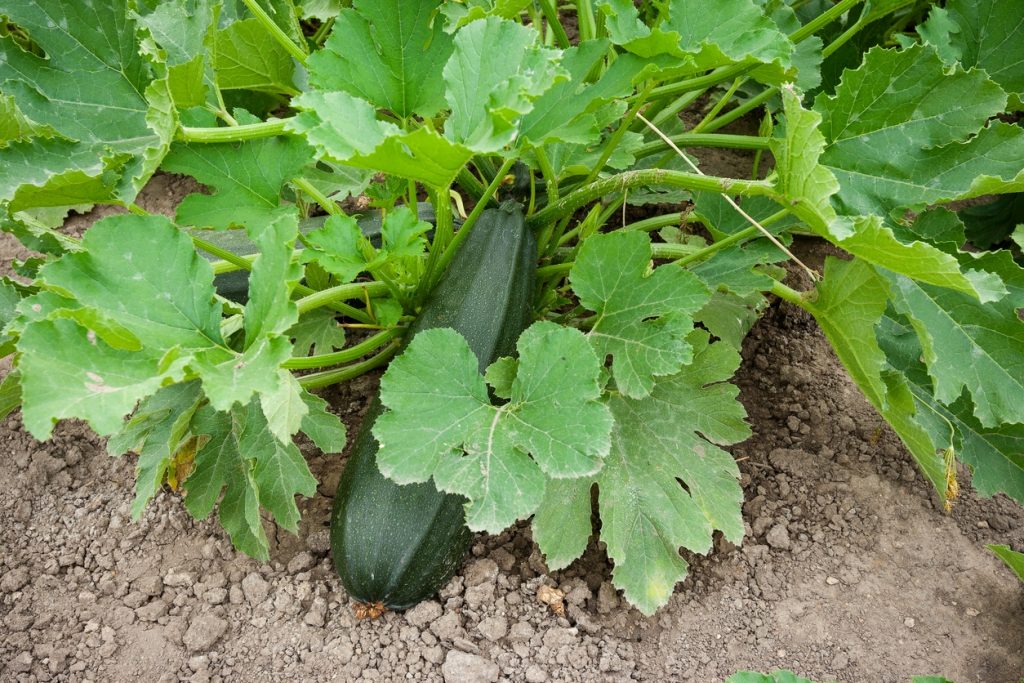Zucchini Growing Problems – Troubleshooting Zucchini Diseases And Growing Issues
We wrote before about growing zucchini and we touched on the common pests and diseases that target this vegetable. But as it turns out we were only scratching the surface. Because zucchini problems run deep and could prove to be fatal for the whole crop if not dealt with early on.
So in this article, we’ll address some of those zucchini growing problems and focus on the best way to fix them. Some of these problems are due to human error but others are usually beyond your control. Either way the sooner you identify them the better your chances of having a good harvest by the end of the season.
Deformed Zucchini
Zucchini is known for its slender shape and smooth skin. No matter what color the ripe veggie is, it still attracts you with its appealing looks. So when the unripe vegetable on the plant starts to have bumps on its surface, your first thought would be to uproot the whole batch and get rid of it. So what causes these ugly bumps on zucchini?
A whole family of viruses causes deformed zucchini. This specific symptom indicates a serious disease that will soon spread out among the rest of the plants. Unfortunately by the time you notice the bumps on the unripe veggies, it would be too late to save the crop. Other signs included stunted plants, yellow spots on the leaves, and deformed leaves as well. And the culprit can be squash mosaic virus, watermelon mosaic virus, zucchini yellow mosaic virus, or papaya ringspot virus.
How to Fix it
Well, if the zucchini batch gets infected with any of these viruses, there’s not much you can do to save the whole batch. You’ll just have to remove the plants and dispose of them safely (usually by burning them in a remote part of the garden). But what you can do is prevent the virus from hitting in the first place.
- Avoid planting zucchini in a spot that was infected with the virus before.
- Get rid of aphids and beetles as soon as you see them on the plants since they carry the virus.
- Get your zucchini seeds from reliable sources since the virus is transmitted through the seeds as well.
- Keep your garden clean of debris and weed which attract pests.
- Always clean your gardening tools after using or lending them to someone.
Zucchini Plant Falls over
Another common zucchini growing problem is when the plants start to fall over as if they were sick or infected. If this is the first time you grow the veggie and you notice this issue, don’t panic. It’s quite common and the remedy is often easy.
This could happen when the fruits are starting to mature and their sheer weight makes the stems of the plants bend down. Other times, it’s the plant’s attempt to reach much-needed resources. For example, if the young plant is not getting enough light and it starts to crawl on the ground to reach a sunny spot.
Drought might also be the reason why your adult zucchini plants are falling over each other. Lack of moisture and nutrients in the stems makes them soft and unable to carry the weight of the leaves, flowers, and fruits.
How to Fix it
Since this problem is not a life-threatening one for the plants nor does it impact the crops, the solutions are just as simple as the problem itself. Here are a few steps you can take to prop up the plant again.
- Build a small mound around the base of each plant to keep it standing upright. Depending on the size of the plant, the mound can be up to 15 inches high and one foot in diameter.
- Use stakes to take the weight off the stalk and give the plant the support it needs. This often works when the heavy fruits are the cause of the problem.
- Water the plants regularly since they are sensitive to drought.
- Use a slow-release fertilizer to provide the plants with the nutrients they need.
Zucchini Leaves Turning Yellow
Zucchini chlorosis is when the leaves of the plant turn yellow. It’s a common issue and its causes vary from benign to lethal.
- Fusarium Wilt: A fungal infection caused by spores that either live in the soil or hitch a ride on the legs of beetles. The disease causes leaves to turn yellow and the stems of the plant to wilt and bend over under their own weight. There’s no cure for this disease and you should remove the infected plants to prevent the spread of the infection.
- Spider Mites: Voracious insects that practically drain the stems of the precious sap. Without moisture and nutrition, the plants can’t keep growing and the leaves turn yellow. To fight off these pests, attract their enemies, lacewings ladybugs, to the garden. You can also use neem oil to spray the plants and eliminate these bugs.
- Cucumber Mosaic Virus: This virus is fatal and spreads easily through beetles to the plants. Once a plant is affected, it’s only a matter of time before the rest of the plants get infected as well. Besides yellowing leaves, the plants display signs of stunted growth and deformed fruits. You should uproot the plants and burn them to prevent infecting other plants in the garden.
How to Fix it
Unless you’re dealing with spider mites, there’s little you can do to save your zucchini crop this season. In fact, in the vases of zucchini mosaic virus, you might have to avoid planting zucchini in the infected spot again for a couple of years. So the best way to deal with this problem is to try to prevent it. Since beetles are the main culprit, you should make your garden as inhospitable for them as possible. Remove weeds and debris and get rid of the beetles and spider mites as soon as you detect them around the plants.
You should also look for zucchini variants that are disease-resistant and only get your seeds from reputable and certified sources.
Zucchini Plant Companions
If your zucchini batch is giving you more problems than usual, the reason might be you’re leaving the plants defenseless against the pests. Most often, you can deter pathogen-carrying pests and keep them away from your zucchini plants by simply planting companion plants. Aphids, spider mites, and beetles can all be confused and steered away from zucchini plants. Luckily, zucchini is a friendly plant and it grows well with other plants without competing with them.
How to Fix it
Depends on the specific pest or pathogen that keeps attacking your zucchini plants, there are companion plants to fight it off. Here are some examples of these companion plants.
- Garlic: Garlic has a strong odor that either repels insects or downright kills pathogens. Aphids in particular are sensitive to this plant and will go out of their way to avoid getting near a growing garlic plant.
- Radish: Beetles, squash bugs, and aphids don’t like radish in any form. So plant radishes among zucchini to keep these pests away and avoid the lethal harm they can cause to the whole batch.
- Beans: These plants are known for fixing nitrogen in the soil. This enriches the soil and feeds the zucchini plants. Nitrogen also strengthens the stems of the plants and helps them fight off diseases.
- Marigold: The odor of marigold works like a charm on many pests. It sends them away from the zucchini and keeps your plants safe.
- Nasturtiums: These colorful plants act as a magnet for aphids. So plant them as far away from zucchini to attract the pests and divert them away from the batch.
You can also grow herbs such as dill, lemon balm, parsley, catnip, mint, and oregano among others as a protective shield around the zucchini batch.
Hollow Zucchini Squash
As with watermelons, zucchini also can become hollow inside. A hollowed-out zucchini is still safe to eat and its taste and flavors will be the same. But if you’re growing commercial zucchini, or want to give it as a gift, a zucchini that’s empty inside is neither a financially viable product nor a suitable gift.
The reason zucchinis have this void inside of the mature fruit is because the seeds didn’t develop properly. That’s caused by poor pollination of the female flowers. The reasons vary for that. You could have dry weather which causes the pollen to dry out before it reaches the female flower, or heavy rainfall prevents pollinators from doing their job around the garden.
Dry soil can also wreak havoc on the plants as some parts grow faster than others. Boron deficiency has the same impact on zucchini as on ripe watermelons as well.
How to Fix it
To prevent your mature zucchini fruits from having hollowed insides, you need to pay attention to the pollination of the flowers, watering patterns, and nutrients in the soil.
- Attract pollinators to your garden with flowering plants such as borage that bloom around the same time zucchinis start to flower.
- If the pollinators don’t do a good job, you might have to pollinate the flowers yourself. Brush the stem of the male flower inside the swollen part of the female zucchini flower to get it pollinated.
- Water the plants regularly to prevent the soil from drying out.
- Use mulch around the base of the plant to keep the soil moist and improve water retention.
- Use plant food supplements rich in boron to improve the growth of the fruits.
Zucchini Blossom End Rot
Squash is susceptible to blossom end rot as much as tomatoes. It starts as a little blemish at the end of the blossom which gradually spreads. The blossom turns dark and becomes squishy as it rots. While calcium deficiency is often the main cause of this problem, other factors also contribute to its spread. Among these root damage, excessive fertilization, and an abundance of crops are things to consider.
How to Fix it
Perhaps the best way to prevent zucchini blossom end rot is to make sure the soil has plenty of nutrients for this heavy feeder. Pay extra attention to the concentration of calcium in the soil. When watering the plants, make sure the soil is moist without overwatering it or letting it dry out.
Mulching is an easy fix for the soil that dries out quickly or absorbs the moisture too fast. Cover the soil with a 4-inch layer of straw. It also prevents weeds from growing and keeps bugs and pests at bay.
When fertilizing zucchini, use a custom 5-10-10 fertilizer that’s high on phosphorus and low on nitrogen. Phosphorus is crucial for the growth and health of the flowers and helps the plant fight off this disease.


